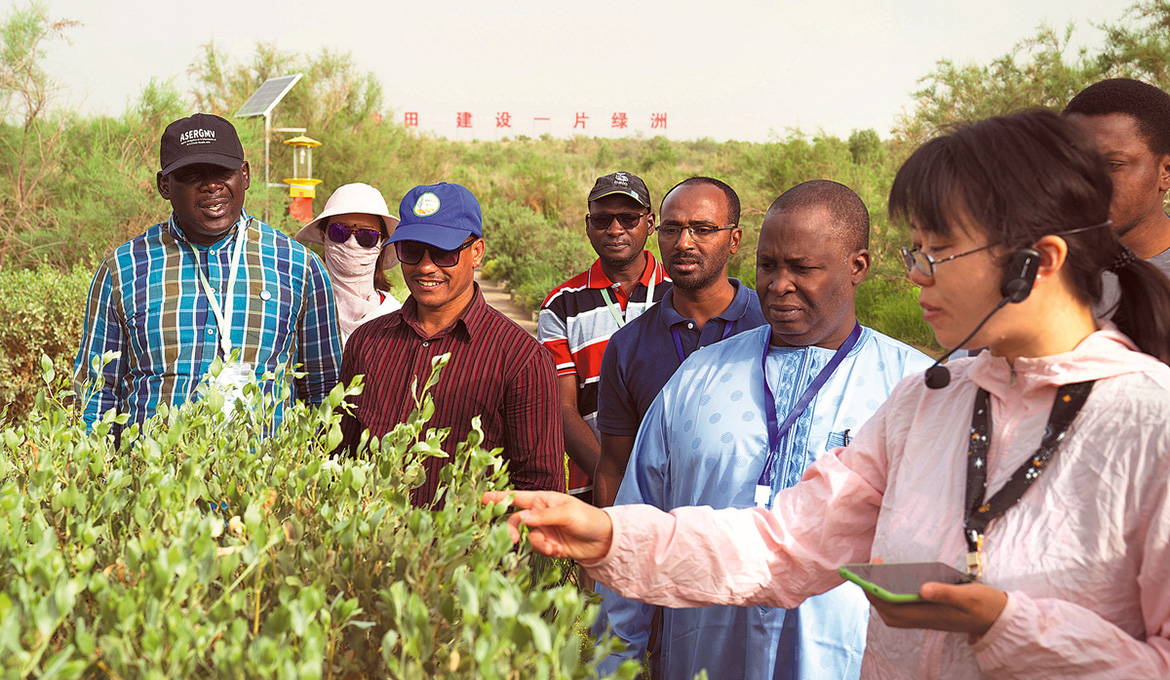Technology to slow down desertification is successfully tested in Kazakhstan. The effect is an ecological barrier construction, and the technique will now be applied to more desertification areas. Increased vegetation also binds more carbon dioxide from the air.
The head of Kazakhstan’s Forestry Research Institute – Rakhimzhanov Alimzhan Nursultanovich – talks about the desert-braking forest project along the Tarim Desert Highway in Xinjiang Uygur. He says Kazakhstan’s capital, Astana, located in the central-northern desert grasslands, is known as the ’wind city’ because of its often windy weather.
Forest destruction and difficulties in reforestation plague the region, but now scientists are working to push back the desert.
The project involves students from the Taklimakan desert forum and the Training workshop on desertification combat, among others. Media reporting on desertification control techniques say the work benefits 17 countries and a total area of more than 50,000 hectares.
Prevent Desertification
Working with institutions such as the Seifullin Kazakh Agrotechnical University, the Xinjiang Institute of Ecology and Geography has selected eight tree species that are highly suitable for creating ecological barriers. The result is successful reforestation on dry slopes and gravel lands.
”In dry areas, plants can directly absorb and utilize dew through the leaves; at the same time, some deep-rooted plants also have the ability to redistribute water in the root system,” writes the Xinjiang Institute, which notes that the poplar species Populus euphratica is suitable for preventing desertification. The tree uses the trunk and the soil adjacent to the tree for water storage during dry periods.
The research team collaborates with research institutions and universities in countries such as Mauritania, Nigeria and Ethiopia in Africa.
”Technologies that work for extreme environments and difficult ecological landscaping, including mechanical sand control, ecological restoration of shrublands and grasslands, and water harvesting and vegetation restoration, are constantly being developed,” Tianshannet writes.
In Ethiopia, the researchers have developed a model for bushland restoration and sustainable development in lowland areas, which has benefited 43,000 people from 13 communities.
”In the future, we also hope to strengthen cooperation in staff training and other aspects,” says Zinabu Bora, director of the Pastoral Area Livelihood Research Center in Ethiopia.
”While promoting technology and strengthening cooperation in scientific research, we have paid more attention to training local talents,” said Wang Yongdong, a researcher at China’s Xinjiang Institute of Ecology and Geography.
The institute has established five joint research centres, nineteen field monitoring stations and ten experimental demonstration zones in Central Asia, Africa and other countries.
By T. Sassersson, editor, NewsVoice

